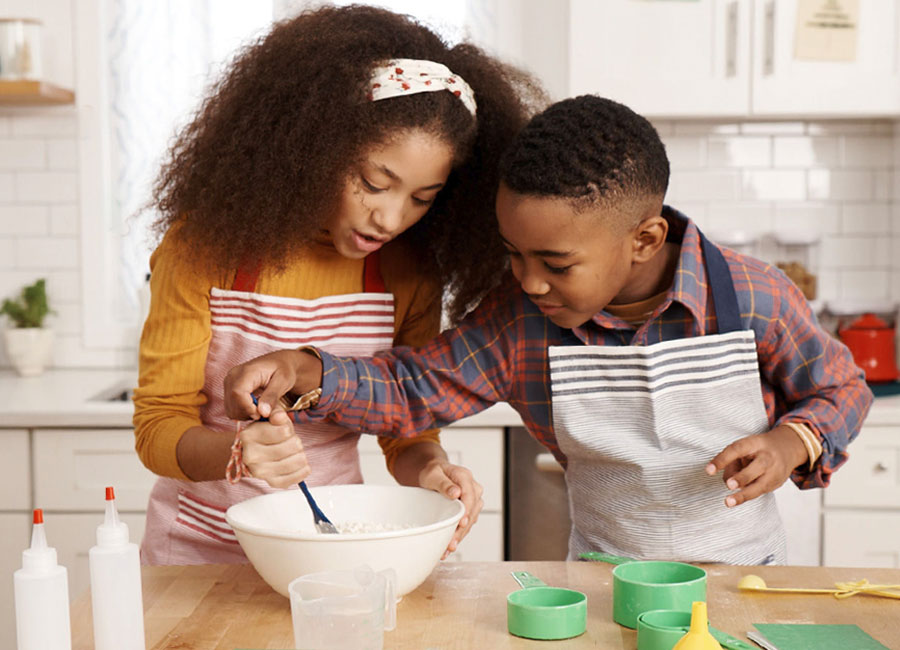1. Experiment with States of Matter
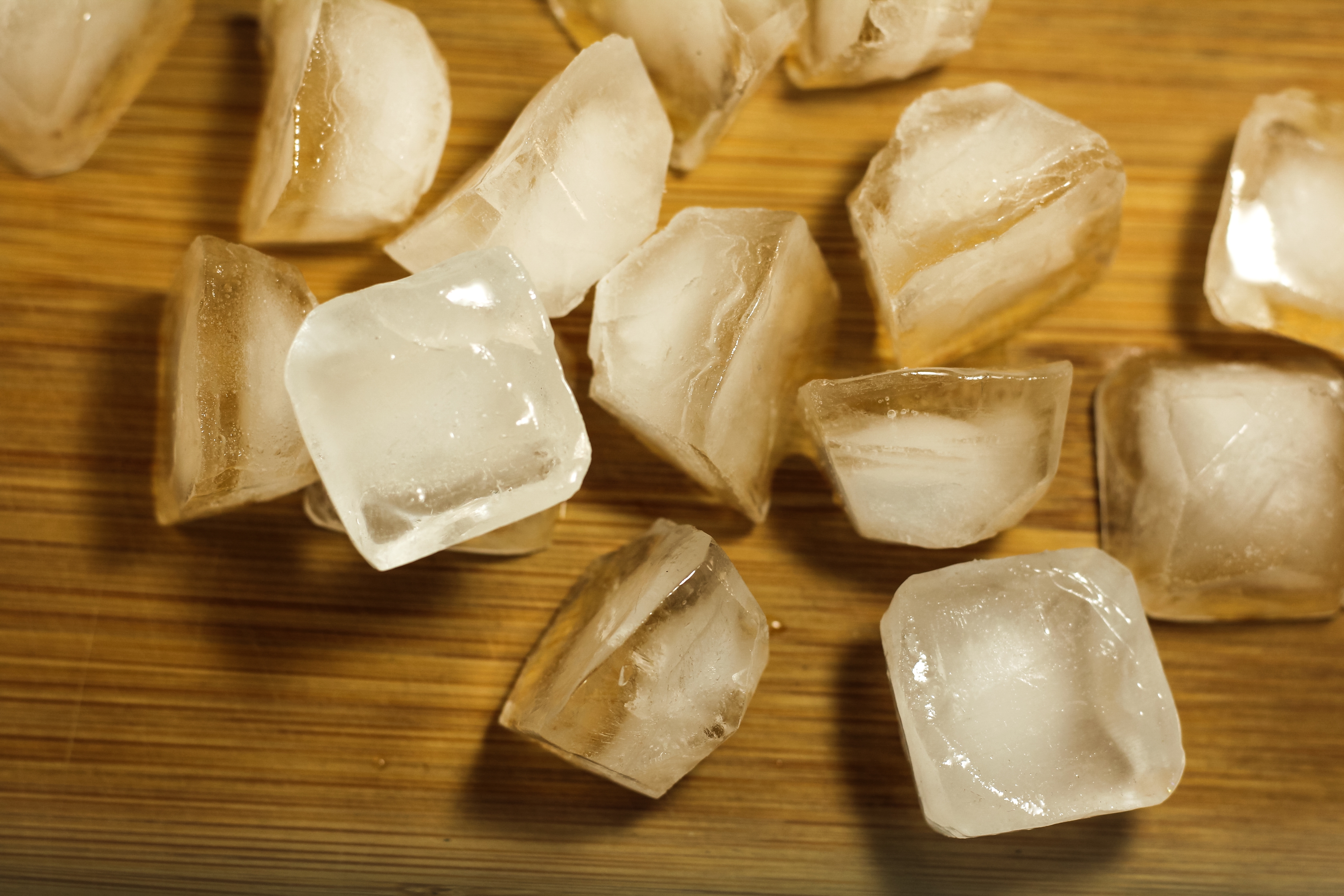
While teaching your young child about the states of matter may seem complicated, cooking can make it simple and hands-on.
- Start by explaining that matter is anything that takes up space or anything you can touch. All things are made of matter! For the most part, there are three types (aka states): solid, liquid, or gas.
- Use water as an example of matter that can be in all three states.
- Grab an ice cube and explain that when water freezes it becomes solid. Matter in a solid state holds its shape.
- Ask your child to drop the ice cube onto a heated saucepan (help as needed). As it melts, explain that when water melts it becomes a liquid. Matter in a liquid state takes the shape of a container its in (e.g. the saucepan)
- Put a lid on the saucepan and watch until the water starts to evaporate. Explain that when water is heated it becomes a gas. A gas spreads out to fill any container it’s placed in (e.g. the space between the saucepan and the lid).
- When you’re ready to start cooking or baking, ask your child to identify the state of matter for each ingredient you’re using.
2. Have Fun with Fractions
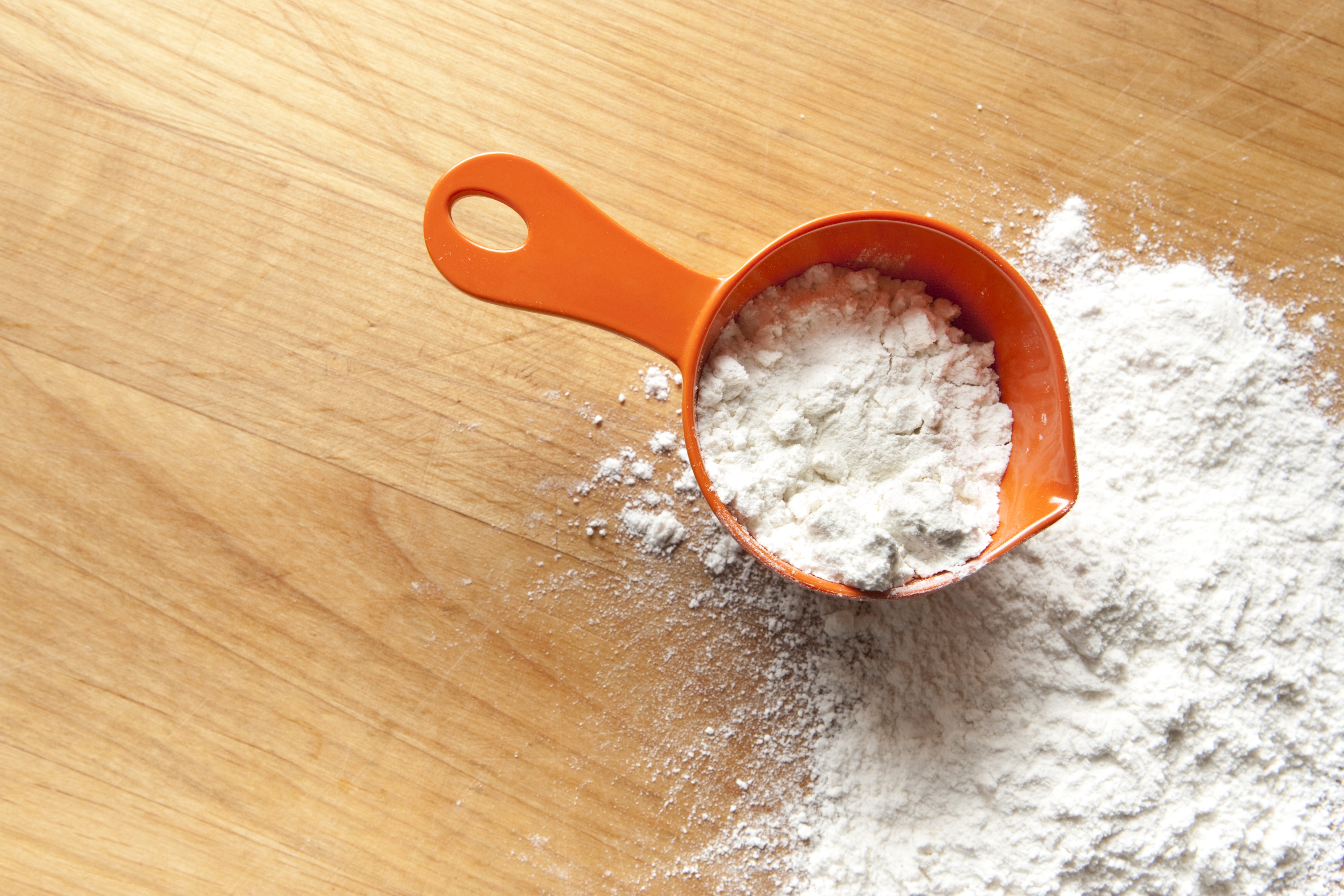
Fractions are much more fun when you’re using them to make something delicious! They’re also easier to understand when you can see them.
- Start by explaining that a fraction is something that shows parts of a whole. Use a pizza as an example of something that is whole and that the pieces are its parts.
- Collect the measuring cups in your kitchen. Show your child 1 cup and explain that it represents a whole and the smaller measuring cups are parts of it. Each measuring cup represents a different fraction. For young children, hold up a smaller measuring cup and ask how many of them you need to fill 1 cup.
- Whenever your recipe calls for a measurement, have your child measure out the ingredients, and depending on their age, challenge them to problem solve with addition and subtraction (e.g. How much more of the ingredient would you need to get to 1 cup? How much of the ingredient would you need to take away to get to ¼ of a cup?).
3. Create Chemical Reactions
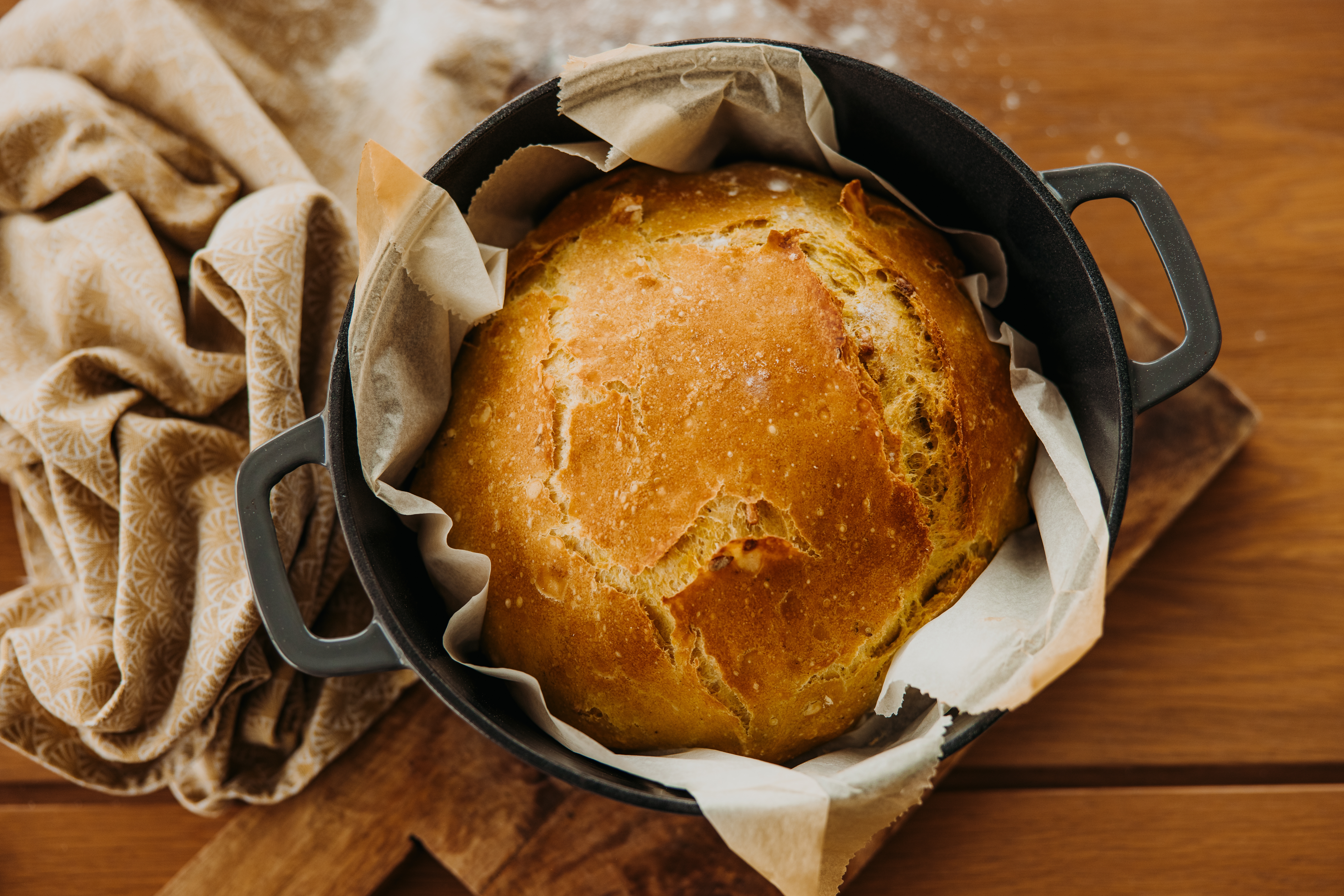
There’s a lot of chemistry involved in cooking. In fact, chemical reactions help make food taste good! This topic is great to explore after discussing the different states of matter.
- Start by explaining that the world is made up of different kinds of substances that are made of matter. Matter is anything that takes up space or anything you can touch. Grab two of your ingredients and use them as examples of matter.
- Then, explain that chemistry is a type of science that studies matter or what everything is made of and how it works. Chemists study the changes that take place when substances are combined.
- Explain that chemists and chefs are a lot alike. When you cook, you have to combine a bunch of ingredients (aka substances) and sometimes two ingredients or more are combined to make something new. When this happens, a chemical reaction occurs.
- As you cook or bake, ask your child to observe the changes taking place when different substances are combined. If they notice bubbles forming or colors changing (e.g. browning or burning bread), it’s likely a chemical reaction is taking place.
- Parent pro tip: Next time you burn dinner, blame it on chemistry!
4. Tinker with Tools

Introduce technology and engineering by letting your kids play with tools and food!
- Start by explaining the uses for different tools you’ll need to cook.
- Challenge your child to find substitutes for the tools you need using leading questions (e.g. If we didn’t have a whisk, what could we use instead?)
- Got leftovers? Break out some toothpicks and challenge your child to build a food tower!
5. Make Scientific Predictions
Put your little one’s noggin to the test by asking questions about the outcome of your meal to be!
- Start by explaining that a prediction is a guess of what will happen in the future.
- For younger kids, spark curiosity with thoughts that begin with “I wonder” (e.g. I wonder what will happen if we set the oven at a hotter temperature than the recipe says.).
- For older kids, explain that scientific predictions are often “if/then” statements (e.g. If we add more sugar than the recipe calls for then the cake will be really sweet.). Then, ask your child to come up with scientific predictions about the meal you’re making!
Help build your kid’s kitchen confidence with KiwiCo! Here are some of our favorite products that combine cooking and STEAM-learning:
Yummy Crate (Ages 6-14)

Unlock a love of cooking and help kids experience the joy of preparing and sharing a meal. All while taking a bite out of big scientific ideas, like biology, and chemistry.
Science of Cooking: Ice Cream (Ages 5+)

Scoop up a series of kitchen chemistry experiments and kid-friendly recipes for ice cream and sorbet — made using just the tools in this crate and some ingredients from home. Learn about the science behind ice crystals and freezing, how air is one of the most important ingredients in ice cream, and how stabilizers help keep dessert delicious. Then customize the included recipes to make all sorts of creamy concoctions — from choco-cherry ice cream to fresh fruit sorbet!
Science of Cooking: Bread & Butter (Ages 5+)
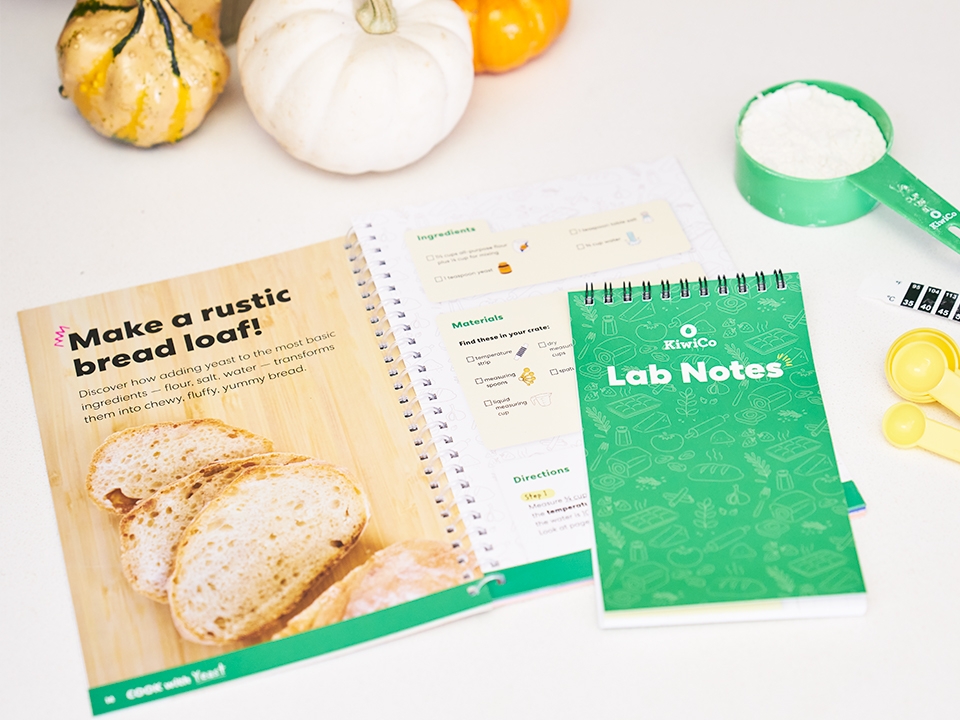
Discover the delectable science of cooking while making your very own baked goods and buttery spreads — from fluffy dinner rolls to cinnamon swirl loaves to tasty garlic butter! Learn how yeast makes bread rise (and shine). Conduct an experiment with globs of gluten, and explore how this elastic goo gives bread its chew. Read all about emulsion, and how cream transforms into butter.
Baking and Fractions (Ages 3+)
.png)
Dig into pretend play — with a hearty helping of math on the side! All you need to cook up some creativity is this solid wood baking set, complete with baking ingredients, spoons, a stand mixer, and a candle-topped cake. Because with the right tools and a little imagination, learning math can be a piece of cake!
